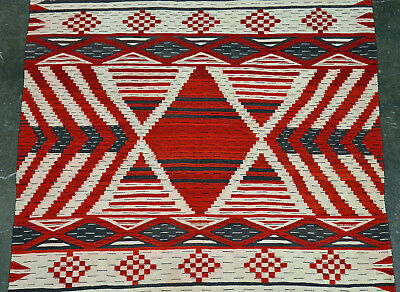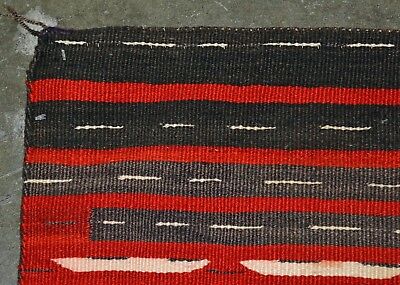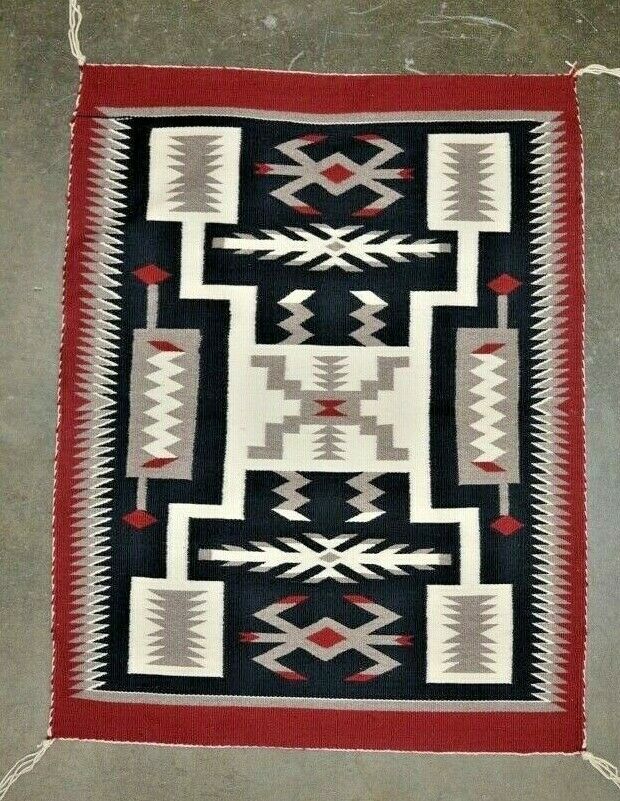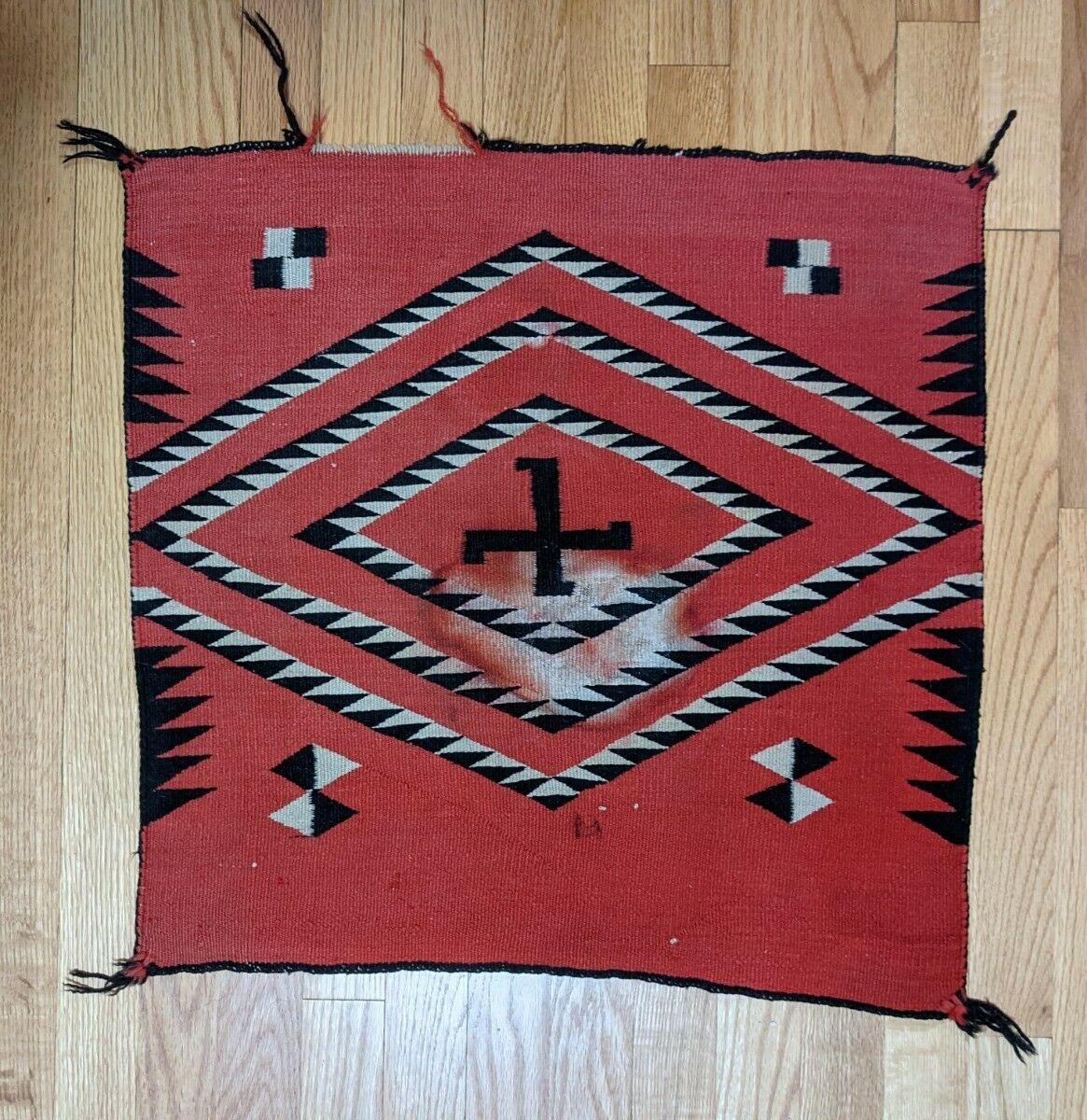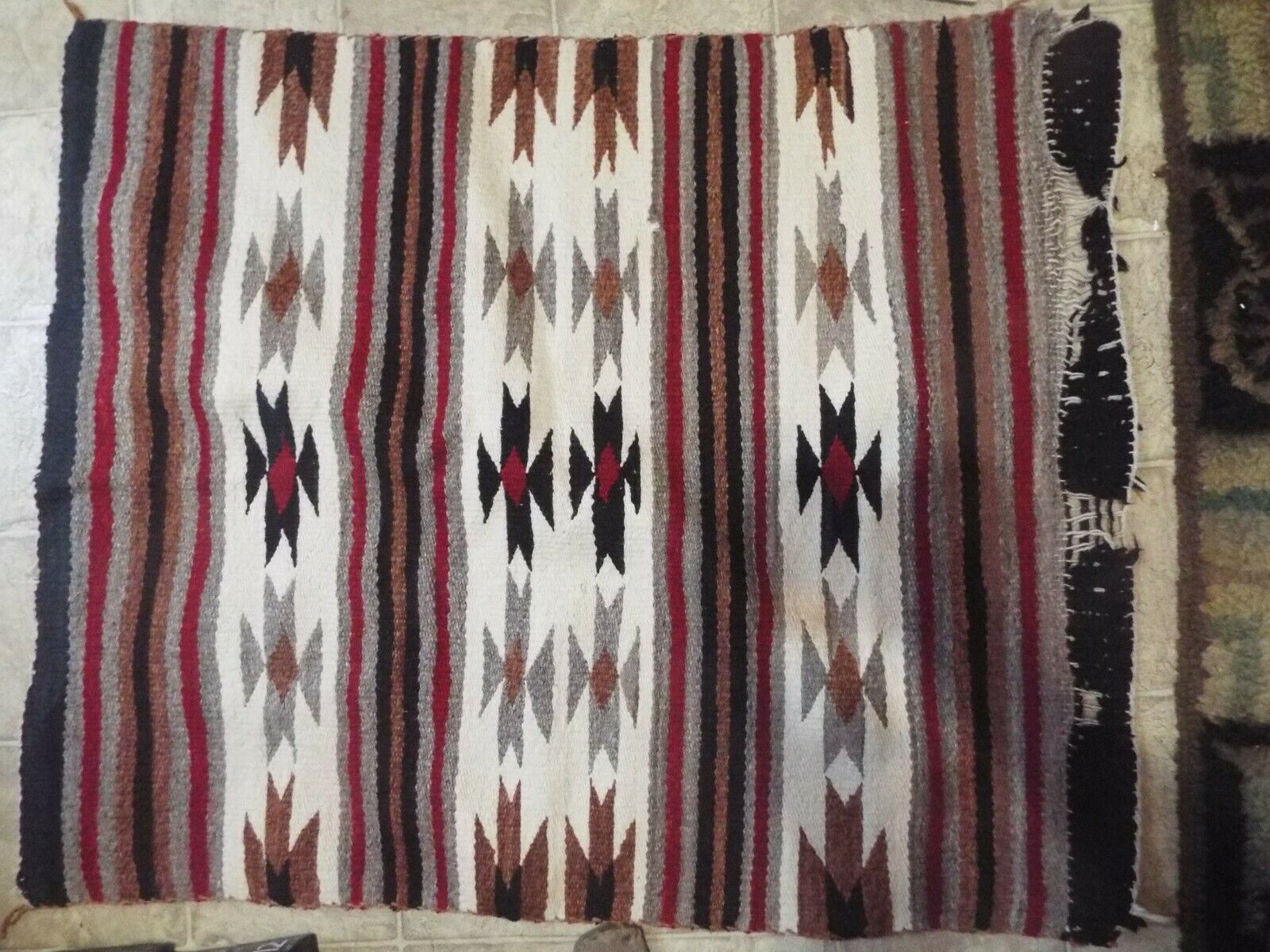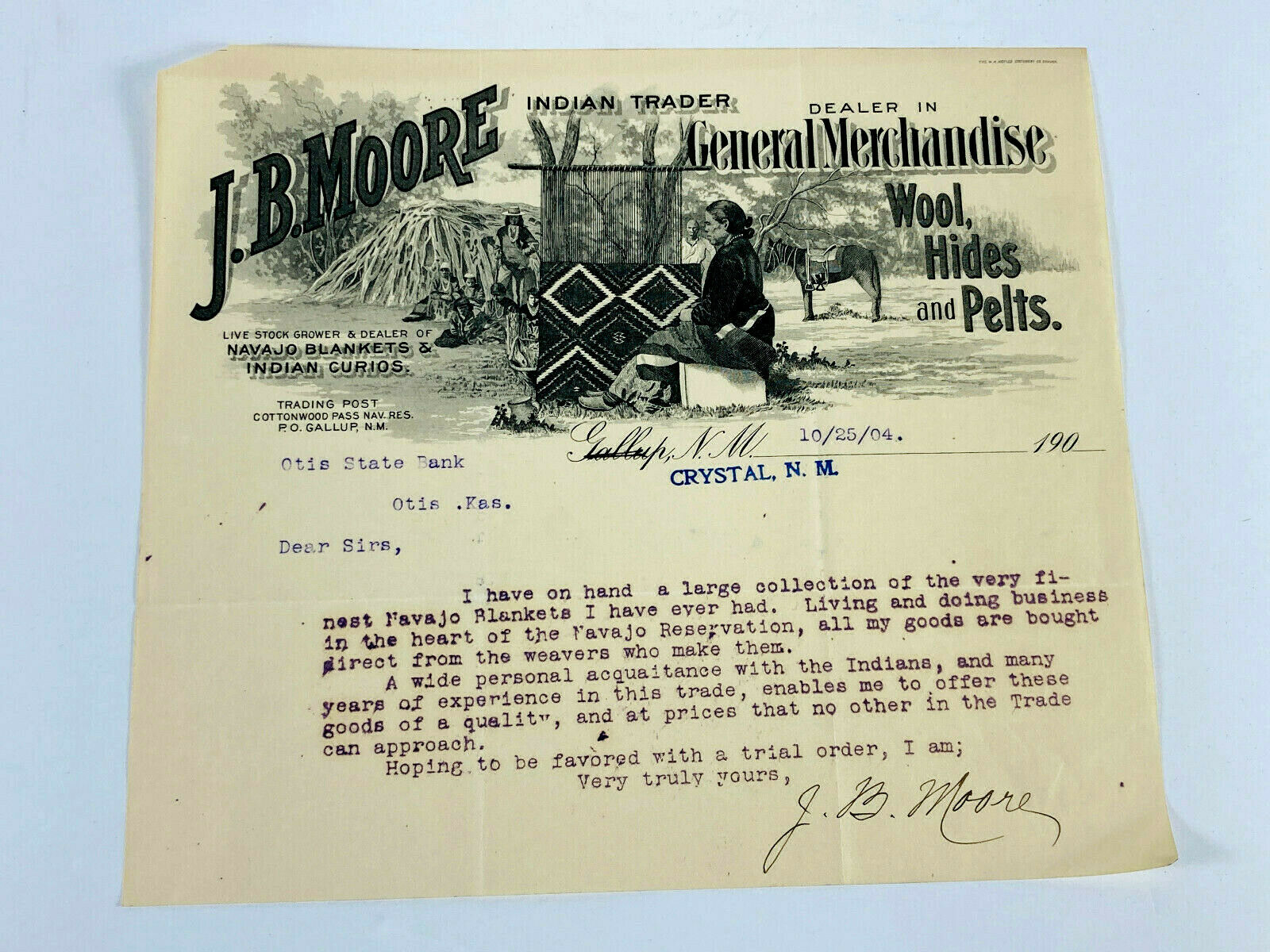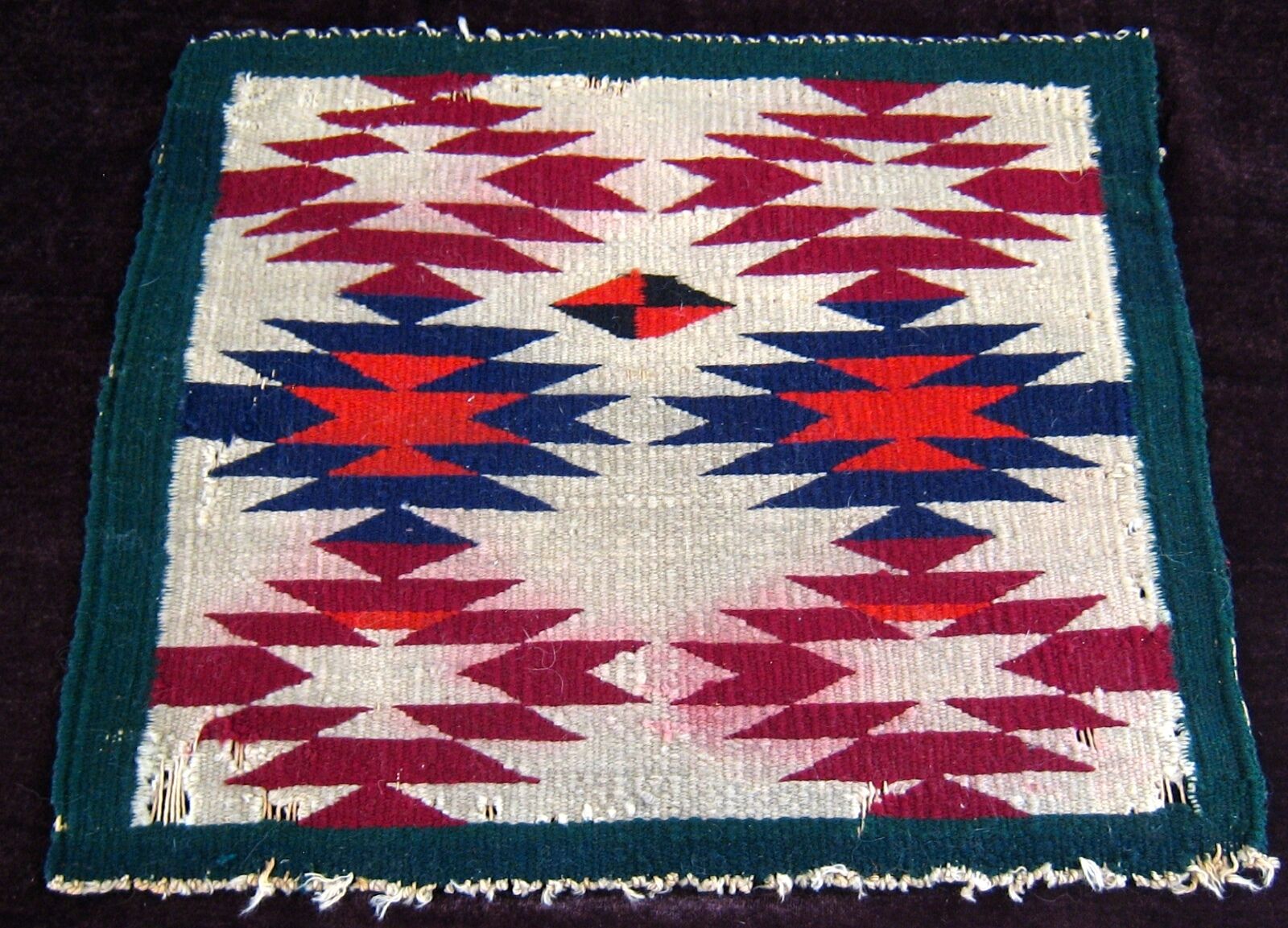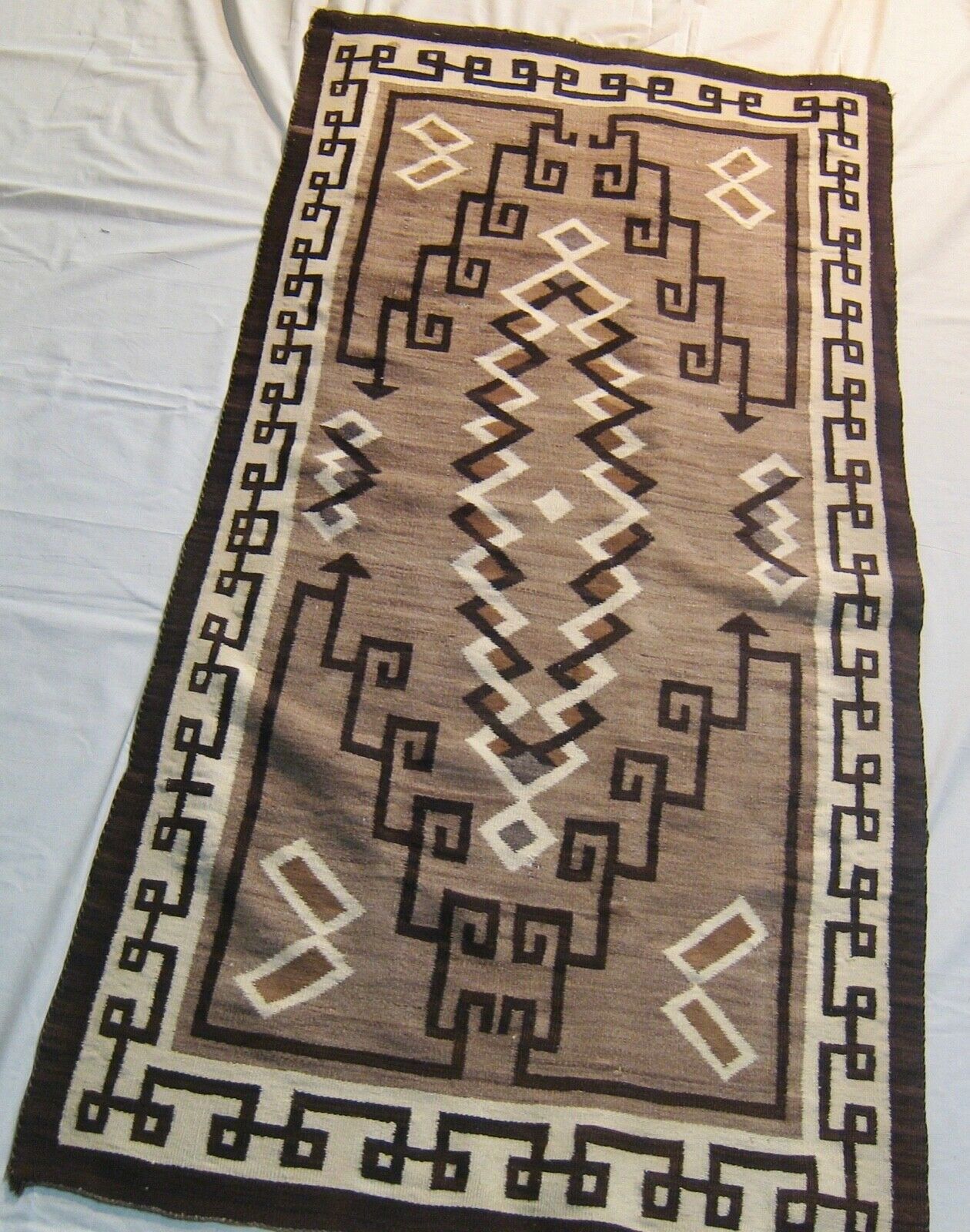-40%
Antique Navajo Rug - Crystal Trading Post -JB Moore 1903 Catalog Rug Plate II
$ 6600
- Description
- Size Guide
Description
Offered byAntique American Indian Art, LLC
---AAIA---
Antique Navajo Rug
Crystal Trading Post - JB Moore Catalog Rug
PLATE II
c. 1903
88" x 58"d
Hand spun wool warp and weft with natural, With the classic serape revival banded blanket pattern. One of the most handsome and best condition
renditions
of this very famous rug pattern.
Recently professionally cleaned. A solid piece, tightly woven with slick, smooth and tightly spun wool yarn.
Has a hand sewn cloth strip used to insert a wooden rod for hanging. Can be easily removed on request.
---
FromWikipedia:
John Bradford Moore
was a trader who established a post at
Crystal, New Mexico
at the western end of the
Narbona Pass
, where he developed the manufacture of Navajo Blankets for sale in the United States.
John Bradford Moore was of Irish origin.[1] He was born in June 1855 in Texas, possible in Cass County.[citation needed] John Bradford Moore of Crook County, Wyoming marrying Marion A. E. Cooney on 27 Mar 1887.[2] Mary Anne [Marion] Cooney was born on 12 February 1864 in Liverpool England, and died on 20 September 1917 in LaFeria, Texas.[3] John B. Moore was mayor of Sheridan, Wyoming in 1892.[4] The Moores had one child, Eunice Moore, born in Wyoming on 23 Feb 1894
Trader
Moore arrived at Narbona Pass in 1896 and bought the trading site, which until then had been open seasonally without permanent buildings. Moore cut timber in the mountains and hauled it down to build a log trading post, which he stocked with supplies carted from the rail head in Gallup. He named his establishment the Crystal Trading Post.[1] Moore wrote of the trading post in 1911, "it is also our mission here to buy any and everything the Navajo has to sell ... to sell him in turn ... everything, in fact, that he has need for."[5]
During the winter months, Moore employed Navajo weavers to make rugs. He ensured that the wool and the weaving was good quality, and created designs of his own,[a] quickly gaining a reputation as a source of good quality rugs.[1] He would buy local wool, but send it for mechanical cleaning and carding to eastern woolen mills.[6] The mills would also dye some of the wool in blue or black. Moore would issue the dyed wool, along with undyed gray and brown wool, to the most skilled weavers.[5] In a break with tradition, Moore had the sixteen or so weavers who worked for him repeat the same design again and again.[7] In a 1910 article, Moore noted that many excellent weavers were under twenty years old, and often the older women suffered from trachoma or other problems with their eyes that prevented them from producing good quality rugs. He paid low wages. Talking of the weaver's life, he said, "there is no more dismal wage proposition than her remuneration for her part in the industry. Given any other paying outlet for her labor, there would very soon be no such thing as a blanket industry ... it is her one and only way of earning money."[8]
Moore's business flourished, and in 1903 and in 1911 he published mail-order catalogs, drawing business from across the United States.[1] In his 1903 catalog, Moore made much of the authenticity of his products. The catalog included photographs of the interior and exterior of the trading post and the land around it, and of Navajo people, outdoor looms and hogans. He said: "While this booklet makes no claim of being a pioneer in its field, I think it may claim to be the first of its kind published and distributed from the very center of the Navajo Indian Reservation, by an Indian trader living among and dealing directly with the Indans who makes the goods which it illustrates and describes."[9] Moore left the reservation in 1911 due to a scandal.[10] He sold the post to his manager, Jesse A. Molohon.[11] Molohon continued to introduce complex non-Navajo styles that probably drew on Oriental rug designs
180414-01
Welcome to Matt Wood's Antique American Indian Art, Inc. (AAIA, LLC.) eBay Listings.
As the nation’s leading gallery of Antique North American Indian Art and Artifacts, we invite you to consider the beautiful art and artifacts that we list on eBay with full confidence in the authenticity and legality of the item, in the accuracy of the listing, and in the professionalism that we demonstrate in processing each transaction.
Celebrating over 45 years in business, Matt Wood and Len Wood are founding members of ATADA (Antique Tribal Arts and Dealers Association), and we provide you, the collector, a unique opportunity to buy directly from our gallery inventory via eBay. We offer Certificates of Authenticity, a 7-day home inspection period allowing returns for full refunds (less shipping/insurance costs), and a lifetime trade-back policy (call for details). We are confident that you will be pleased with the value, service and peace-of-mind that our gallery can offer you. Thank you for looking!
SHIPMENT
We package all items for shipment in the utmost professional manner, and all shipments are fully insured. Please read our Store Policies for all of our shipping information.
PLEASE FOLLOW US on eBay
- If you hit the FOLLOW THIS SELLER link on the top right of this listing under the Seller Information button, you will be able to get the early notices of our new additions and sales. We will be adding lots of quality Antique American Indian Art over the next few months.



